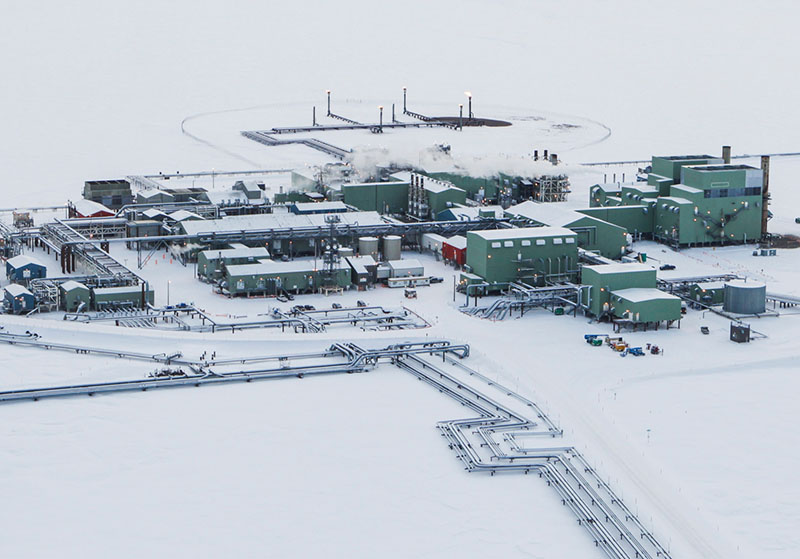(Bloomberg) — A BP Plc well on Alaska’s North Slope is no longer leaking crude oil or natural gas, a spokeswoman said Monday. Environmentalists, describing the well as “out of control,” called on the state to investigate.
The crude spray was discovered Friday morning, and capped early Sunday. A second leak that was emitting gas at a reduced rate was closed off overnight on Sunday, spokeswoman Dawn Patience said in an email. The well was originally completed in 1976 and was currently producing the equivalent of about 500 barrels of oil a day, she said.
The leak came as the remote North Slope, once home to America’s biggest oilfields, has seen signs of a resurgence with producers working to boost output from aging wells and extend their reach to new supplies. Output there rose to 565,000 barrels a day in March, its highest level since December 2013. That’s still down by almost three-quarters from the peak of more than 2 million barrels in the late 1980s.
“The well is no longer leaking any gas or oil,” Patience wrote. “Overnight, the Unified Command achieved source control and killed the well. ”
In 2010, a BP well became the site of the worst offshore oil spill in U.S. history. The deadly Deepwater Horizon accident in the Gulf of Mexico forced BP to sell billions of dollars in assets and set aside more than $50 billion to pay for damages.
While it’s not uncommon for natural gas to escape from North Slope wells, an emergency of Friday’s magnitude is rare, said Lois Epstein, Arctic Program Director for The Wilderness Society, an environmental group in Anchorage.
Something Wrong
“Whenever you have an out-of-control well like this, that means something very serious went wrong,” Epstein said in a telephone interview. “This really needs to be thoroughly investigated to find out what went wrong and whether there’s a danger of it happening again.”
The North Slope is also home to vast underground reserves of natural gas, but the lack of a gas pipeline out of the region has kept companies from bringing any of it to market. The gas, which comes up along with oil, is typically pumped back underground to squeeze more crude oil out of the reservoirs.
The volume of the North Slope leak hasn’t been determined and the cause of the release is unknown, the state’s Department of Environmental Conservation has said. There have been no injuries and no reports of harm to wildlife. The nearest local community, Nuiqsut, located about 50 miles west, has been notified.
“It’s tough to determine collateral impacts at this point, but some incident-related slowdown at Prudhoe Bay seems at least a reasonable risk to consider,” Tudor Pickering Holt & Co., a Houston-based energy investment bank, wrote in a Monday note.
‘Jacked Up’
Emergency crews responding on April 14 discovered the well had “jacked up,” or risen, by three to four feet after the incident, the state said in its latest report. That movement broke a well pressure gauge and temporarily delayed efforts to close off the well, the state said. By Sunday night, the well had settled about 11 inches.
Based on aerial pictures, the release appeared to be contained to the gravel pad surrounding the well head and never reached the surrounding tundra, BP said in an earlier statement. The well has been shut in since Friday.
BP did not immediately respond to questions about how much oil the well typically produces. Candice Bressler, a state spokeswoman, referred production questions to the company.
Alyeska Pipeline Service Co.’s Trans-Alaska Pipeline System, which runs from Prudhoe Bay south to Valdez, isn’t affected by this incident and is operating normally, Michelle Egan, a company spokeswoman, said by telephone Sunday. Alyeska is a joint partnership led by the North Slope’s top producers, BP Plc, Exxon Mobil Corp. and ConocoPhillips.
Alaskan North Slope crude was valued at $1.80 a barrel over U.S. benchmark West Texas Intermediate on Monday, according to data compiled by Bloomberg. It has averaged a $1.16 premium to WTI this year.
Bloomberg News by Jessica Summers and Alex Nussbaum




